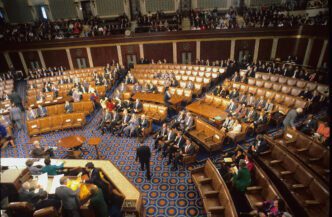Executive Summary
The Story So Far
Why This Matters
Who Thinks What?
The Federal Aviation Administration (FAA) has implemented flight limitations at 40 major U.S. airports, a measure attributed to air traffic controller shortages compounded by an ongoing federal government shutdown. While the restrictions target large hubs, passengers utilizing smaller regional airports are expected to bear the brunt of the disruptions, with feeder flights being the primary cancellations. The new limits went into effect on Friday, November 7, 2025.
The strategy behind these cancellations is to minimize overall system disruption by cutting flights at smaller airports, rather than those connecting major cities. This approach allows airlines to comply with the new FAA limits while maintaining critical routes between larger hubs.
For instance, Miami International Airport is among the 40 airports under FAA restrictions. However, Pensacola International Airport, a smaller regional facility nearly 700 miles away, saw all eight American Airlines flights to Miami canceled on Friday. Travelers from Pensacola faced the choice of driving long distances or flying circuitous routes through other major hubs like Atlanta or Dallas to reach Miami.
Flight tracker FlightAware data indicated that U.S. airports experiencing the highest percentage of cancellations on Friday were predominantly smaller ones. Quad Cities International Airport in Moline, Illinois, reported 9% of its outbound flights canceled, while Shreveport Regional in Louisiana saw 7% grounded. This contrasts with major airports, where only one of 46 flights from Los Angeles International Airport to a New York airport was canceled, according to aviation analytics firm Cirium.
Short-distance connecting flights also faced significant cuts. United Airlines canceled eight of 24 flights between Colorado Springs and Denver, a route of approximately 100 miles. Similarly, American Airlines canceled four of six flights between its Dallas-Fort Worth hub and Waco, a comparable distance.
The FAA stated its intention to minimize impacts on smaller airports, indicating that it “may direct cancellations on a more prescriptive basis” if airlines do not manage to do so. However, aviation expert Zach Griff noted that airlines prioritize “hub to hub” flights due to their significant downstream effects on both passengers and crews, making smaller feeder flights more susceptible to cuts.
Impact on Regional Travel
The federal government shutdown and subsequent FAA flight limitations are creating a disproportionate burden on travelers in smaller communities. While the measures aim to manage air traffic controller shortages, the resulting cancellations highlight the vulnerability of regional air travel when system-wide disruptions occur.








